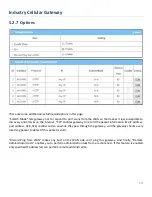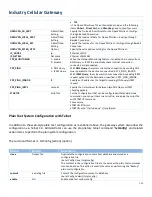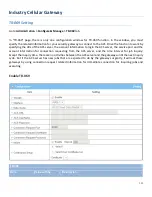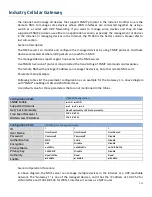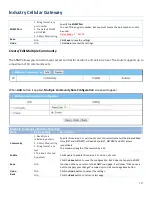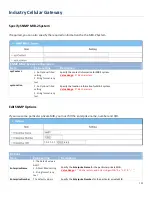
Industry Cellular Gateway
6.1.3 SNMP
In brief, SNMP, the Simple Network Management Protocol, is a protocol designed to give a user the capability
to remotely manage a computer network by polling and setting terminal values and monitoring network
events.
In typical SNMP uses, one or more administrative computers, called managers, have the task of monitoring or
managing a group of hosts or devices on a computer network. Each managed system executes, at all times, a
software component called an agent which reports information via SNMP to the manager.
SNMP agents expose management data on the managed systems as variables. The protocol also permits active
management tasks, such as modifying and applying a new configuration through remote modification of these
variables. The variables accessible via SNMP are organized in hierarchies. These hierarchies, and other
metadata (such as type and description of the variable), are described by Management Information Bases
(MIBs).
The device supports several public MIBs and one private MIB for the SNMP agent. The supported MIBs are as
follow:
MIB-II (RFC 1213, Include IPv6), IF-MIB, IP-MIB, TCP-MIB, UDP-MIB, SMIv1 and SMIv2,
SNMPv2-TM and SNMPv2-MIB, and AMIB (AMIT Private MIB)
SNMP Management Scenario
Scenario Application Timing
There are two application scenarios of SNMP Network Management Systems (NMS). Local NMS is in
293

